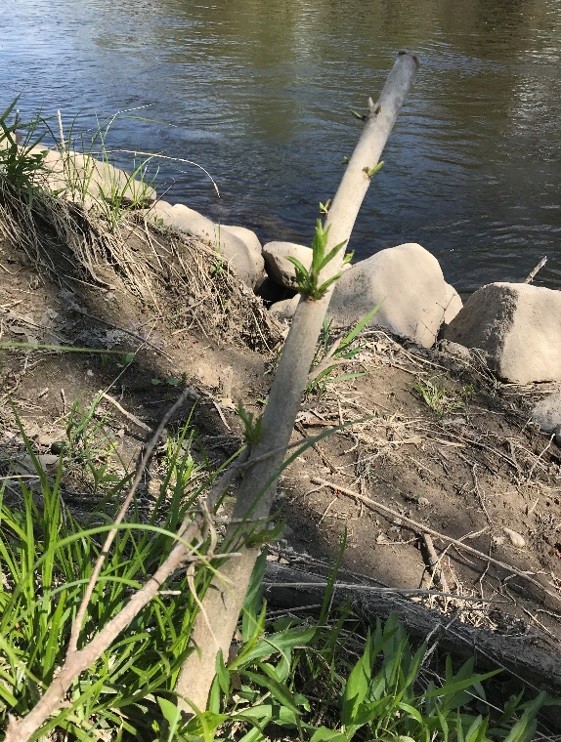Protecting Your Streambank without Breaking the Bank
Erosion along streambanks can cause pollution to local water resources and result in loss of property for landowners. Many times, developmental practices leave streambanks bare and without vegetation covering the soil which can lead to erosion.
Live staking is a practice that puts vegetation back into vulnerable areas. This practice is very low-cost when compared to other streambank stabilization practices and is also something that a landowner can do on their own.
Live stakes can be purchased but many times can be found actively growing in the wild. The most common species used for live staking are species of Willow and Dogwood.
Live stakes should be cut in 2-3 foot lengths and be between 0.5 and 1.5 inches in diameter. It's recommended to cut the stakes at an angle to make them easier to install.
Once harvested, live stakes can be stored for several days in a bucket of water out of the sun but it is recommended to harvest and install live stakes within the same day.
Install stakes in rows, two to three feet apart along the streambank. Planting needs to be deep enough so that the plants can reach water. The stakes are purposely planted densely knowing that not all stakes will survive.
Strong root growth is important during the first growing season. You may not see above-ground growth or budding but that does not mean plants didn't survive. A light tug on the stake can help identify if the roots have become established.
This practice is easy to maintain and additional stakes can easily be added in the future to improve bank stability and fill in any of the areas you may have missed.
When you subscribe to the blog, we will send you an e-mail when there are new updates on the site so you wouldn't miss them.
